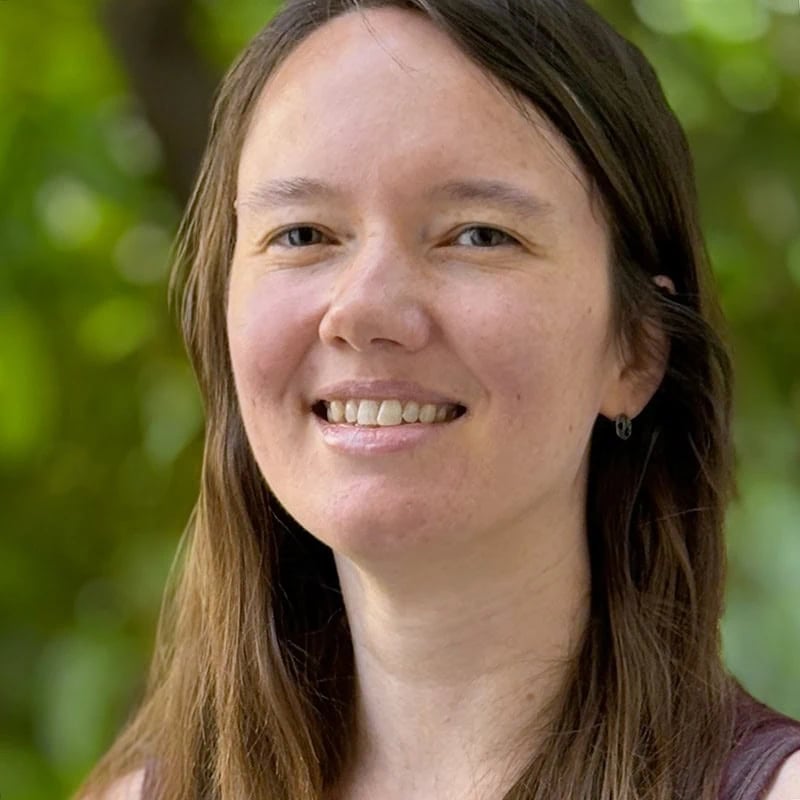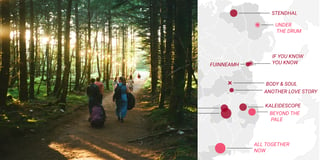How albatross mamas get bi
Hi! Erle from the visualization team here. This week, we are traveling to the sunny island of O’ahu, where some birds decided to ditch the traditional family structure for something a bit more queer.
Are you delighted by the sight of a peacock spider male doing his mating dance (and consequently being gobbled up by a peacock spider female)? Does the fluidness of frogs’ biological sex fascinate you? Then you will probably enjoy Lucy Cooke’s Bitch: A Revolutionary Guide to Sex, Evolution and the Female Animal. This book abounds in engrossing stories about the secret life of animals, showcasing the many different ways in which biological sex and gender roles manifest themselves in nature. It’s hard for me to pick a favourite anecdote, but a sure contender is the case of the Laysan albatrosses who engage in same-sex parenting.
In bird colonies on the Hawaiian islands of O’ahu and Kauai, female albatrosses have been observed to pair with another female when incubating her egg and raising her chick, instead of going the conventional route and pairing with a male. Lindsay Young, the zoologist who pioneered the research on this alternative form of albatross child rearing, has mapped out a "life stage transition probability" diagram for female albatrosses in O’ahu. I have recreated this diagram here:
As evidenced by the diagram, trying to raise a chick with another female comes at a cost for the mamas. When compared to a female who pairs with a male, they are slightly less likely to survive when successfully raising a chick, and skip breeding more often after having made an attempt at it in the previous year. This is because both birds still lay an egg, and doing so is a physically taxing and exhausting task. They end up discarding one of the eggs — a detail from Young’s research that I found quite lovely is that the same-sex couples seem to alternate between whose egg is kept each year — and take turns incubating the egg. But the female who lays the egg will take the first turn, which means she doesn’t get a well-deserved break to fly to the sea, gorge on fish, and gain energy. This puts a huge strain on her already weakened body. The diagram shows that females from same-sex pairs who have proven their worth as good mommies are more likely to transition to opposite-sex pairs than the other way around, either directly or after a skip year. And this makes sense, given that with a male partner, they are more likely to raise a greater number of chicks and less likely to die trying.¹
So if getting a guy means your life will be easier overall, why do these female birds try their talon at same-sex parenting in the first place? You can probably guess: in these colonies, the guys are scarce. First off, young female albatrosses tend to leave their birth colony more often to settle on new territory than young males. Another possible factor is that male albatrosses are more likely to die because they go after the bait set out by long-line fishing boats. The Kaena Point colony - on which Young’s research focuses - is relatively new, and, at the time of research, had a ratio of 60% female birds. This being the case, the males get to be picky and seek out the successful breeders.²
The ladies who stay single don’t want the lack of men to get in the way of having a baby. And since the whole chick-rearing process is too burdensome for one albatross alone, these females use a male bird from an existing couple as a sperm donor, and then look for a girlfriend to raise the kid with. They go through the whole courtship ritual to find a suitable partner, including mating dances (this is aptly dubbed “albatross disco” by Cooke in her book, and apparently involves a lot of head bobbing). Once the partnership is established, they act like two regular lovebirds: when the female that is not incubating the egg comes back from her time at sea, she engages in cuddling and allopreening with her partner, which — as in humans — releases oxytocin. This hormone alleviates stress, strengthens the pair’s bond and social recognition of each other. As the diagram shows, although some females with a female partner switch to a male partner in the next year, many female couples are in it for the long run.³
Supernormal clutches or normal butches?⁴
The story⁵ behind the discovery of these same-sex albatross couples is an interesting and telling one. Albatrosses have long been known for their dedicated monogamy. On her visit to Hawaii in 2006, Laura Bush, wife of Republican President George W. Bush, praised the albatrosses for their lifelong commitment to their partner. Only in 2008 did Young’s research bring to light that this commitment is not just reserved for the opposite sex. It took a while to get there, even if the signs had been present for a long time. Since 1919, a curious phenomenon had been documented in the Hawaiian colonies: even though it’s physically impossible for the Laysan albatross to lay more than one egg per breeding season, some nests would contain two eggs. In biologist lingo, these nests with more eggs than usual are called “supernormal clutches”, and in the case of the Laysan albatross, ornithologists would explain them away by assuming some females could lay two eggs after all, or might dump their eggs in someone else’s nest. Only at the start of the 2000s, the biologist Brenda Zaun, upon realising that some nests would end up with two eggs each year⁶, asked Young to do a DNA test on one of the couples of these nests. And lo and behold, both birds turned out to be female.
At first, Young thought she had made a mistake. So she did DNA tests on all couples with supernormal clutches, and did so multiple times, to be absolutely sure that her results were rock solid.⁷ In the end, out of the 125 nests that had existed on Kaena Point from 2004 to 2007, she counted 39 nests that belonged to same-sex albatross couples.
The story of the Laysan albatross makes for a quirky and endearing anecdote. But honestly, what I love most about this bird’s tale is that it shows the malleability of nature. These albatrosses, as well as the many other colorful animals that Bitch puts in the spotlight, are all examples of how the natural world — our world — can be much more diverse and adaptive than we might give it credit for.
I hope you feel inspired to pick up Lucy Cooke’s book - she is such a fun writer, whether she is describing albatross discos or gently rebuking Darwin for his fixation on female passivity. Next week my colleague Alex from our design team will be back with another Weekly Chart.
Notes
¹ This is another reason why females in same-sex pairs end up taking a skip year more often. As can be seen from the diagram, there is a reasonable chance (19%) that they find a male partner afterwards.
² In fact, you’ll notice that the diagram has no arrow directing females from a failed same sex pair towards the state of being in an opposite-sex pair, since males don’t seem to want to get involved with those females. Note also that, compared to females in same-sex couples, females who managed to hook up with a male are less likely to skip breeding the following year, whether they successfully raised a chick or not. Young and her co-authors suggest that these birds skip the skipping in order to retain their male partner.
³ In their 2008 article “Successful same-sex pairing in Laysan albatross”, Young and her co-authors write: “Almost half of the female–female pairs on Oahu were together for the duration of this study (4 years). Several pairs on Kauai have been together for at least 8 years, and one pair on Kauai has been together for 19 years […], indicating that female–female pairing is a long-term strategy.”
⁴ Young warns against dubbing these same-sex albatross couples lesbian, since we are talking about birds, not humans, and the concept is not transferable. While I absolutely defer to her opinion about this, I had to come up with a catchy heading and just couldn’t help myself 🙊.
⁵ Most of the information in this paragraph has been taken from the chapter “Sisters are doing it for themselves”, Bitch, p. 326-336, Dutch translation.
⁶ Albatrosses tend to stay in the same nest each year. See Bitch, p. 330
⁷ As Cooke writes in Bitch: “[Young’s] next reaction was: No one is going to believe me”. (Bitch, p. 330). Incidentally, it’s interesting to read about the reaction of the non-scientific community when Young's research became public: both in conservative and progressive circles, it was immediately used politically (as is probably to be expected).



